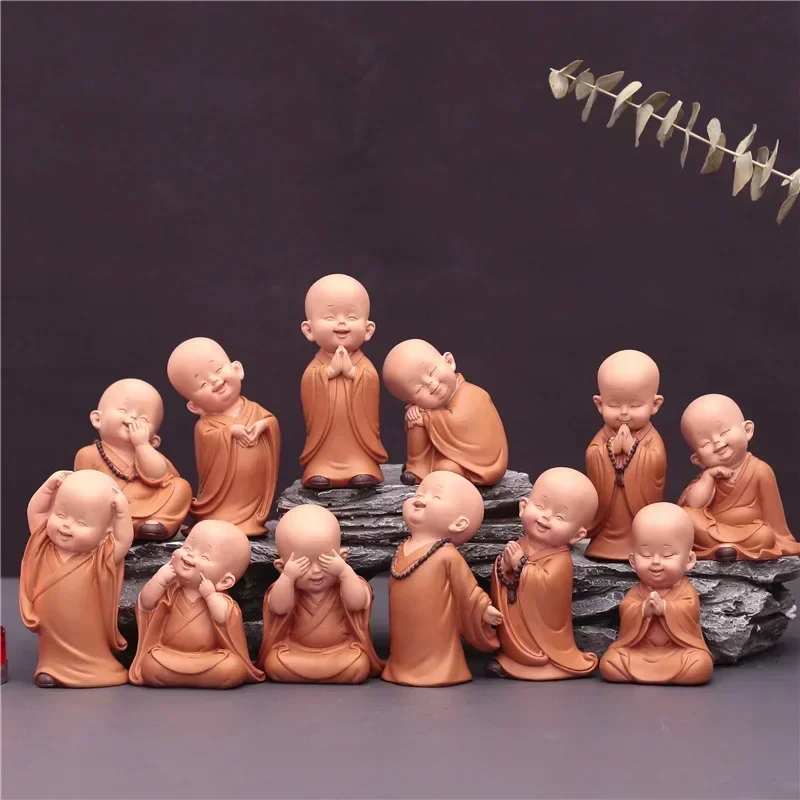Transcendental Meditation,In today’s fast-paced and chaotic world, finding inner peace has become more important than ever. With the constant demands and pressures of daily life, it can be challenging to maintain a sense of calm and tranquility. However, the benefits of cultivating inner peace are immense, not only for our mental and emotional well-being but also for our physical health. In this article, we will explore the concept of inner peace and delve into the practice of Transcendental Meditation (TM) as a powerful tool for achieving it.
Contents
- 1 Understanding Inner Peace: What Is It and Why Is It Important?
- 2 The Science Behind Transcendental Meditation: How It Works
- 3 What Are Transcendental Meditation Mantras and How Do They Work?
- 4 The Benefits of Transcendental Meditation: From Reducing Stress to Improving Focus
- 5 How to Get Started with Transcendental Meditation: Finding a Teacher and Learning the Technique
- 6 Choosing the Right Mantra for You: Tips and Guidelines
- 7 TM Meditation Mantra
- 8 Vedic Meditation Mantras
- 9 Transcendental Meditation Technique Mantra
- 10 Transcendental Meditation Phrases
- 11 TM Mantras by Age
- 12 FAQs
- 12.1 What is Transcendental Meditation?
- 12.2 What is a mantra?
- 12.3 How does Transcendental Meditation work?
- 12.4 What are the benefits of Transcendental Meditation?
- 12.5 How do I learn Transcendental Meditation?
- 12.6 Is Transcendental Meditation a religious practice?
- 12.7 Can anyone practice Transcendental Meditation?
Key Takeaways
- Inner peace is important for overall well-being and can be achieved through Transcendental Meditation (TM) mantras.
- TM mantras are specific sounds or phrases that help the mind settle into a state of deep relaxation and inner peace.
- The science behind TM shows that it can reduce stress, improve focus, and even lower blood pressure.
- To get started with TM, it’s important to find a qualified teacher and learn the technique properly.
- Choosing the right mantra for you involves considering factors such as age and personal preferences, but ultimately any mantra can be effective in achieving inner peace.
Understanding Inner Peace: What Is It and Why Is It Important?
Inner peace can be defined as a state of harmony and serenity within oneself. It is a deep sense of contentment and tranquility that transcends external circumstances. When we have inner peace, we are able to navigate through life’s challenges with grace and equanimity. It allows us to remain centered amidst chaos, to let go of stress and anxiety, and to experience a profound sense of well-being.
The importance of finding inner peace cannot be overstated. Research has shown that chronic stress can have detrimental effects on our physical and mental health. It can weaken our immune system, increase the risk of heart disease, and contribute to mental health disorders such as anxiety and depression. On the other hand, cultivating inner peace has been found to reduce stress levels, improve sleep quality, enhance cognitive function, and promote overall happiness and well-being.
The Science Behind Transcendental Meditation: How It Works
Transcendental Meditation (TM) is a technique that has gained popularity in recent years for its ability to promote inner peace and reduce stress. But what exactly is TM, and how does it work?
At its core, TM is a simple meditation technique that involves the use of a mantra – a specific sound or phrase – to focus the mind and induce a state of deep relaxation. The practice of TM is rooted in ancient Vedic traditions and has been scientifically validated for its effectiveness.
When we practice TM, our brain enters a unique state of restful alertness. This state is characterized by increased alpha brainwave activity, which is associated with relaxation and heightened creativity. As we repeat the mantra silently in our minds, our thoughts become less active, and our mind becomes more settled. This allows us to access deeper levels of consciousness and experience a profound sense of inner peace.
What Are Transcendental Meditation Mantras and How Do They Work?
| Transcendental Meditation Mantras | How They Work |
| Aum | Helps to calm the mind and reduce stress |
| Shanti | Brings peace and tranquility to the mind and body |
| Soham | Helps to connect with the breath and increase awareness |
| Om Namah Shivaya | Brings focus and clarity to the mind and helps to release negative emotions |
| Om Mani Padme Hum | Helps to cultivate compassion and kindness towards oneself and others |
In Transcendental Meditation, mantras play a crucial role in facilitating the meditative process. Mantras are specific sounds or phrases that are repeated silently during meditation. They serve as a focal point for the mind, helping to quiet the mental chatter and bring about a state of deep relaxation.
The mantras used in TM are carefully selected by certified TM teachers based on a specific set of guidelines. These mantras are chosen for their vibrational qualities, which are believed to have a calming and harmonizing effect on the mind and body.
During TM practice, the mantra is repeated effortlessly in the mind, without any effort to control or manipulate thoughts. This repetition helps to transcend the surface level of thinking and access deeper levels of consciousness. The mantra acts as a vehicle for transcending the ordinary thinking process and experiencing a state of pure awareness.
The Benefits of Transcendental Meditation: From Reducing Stress to Improving Focus
The benefits of Transcendental Meditation are wide-ranging and have been extensively studied by scientists and researchers. One of the most well-known benefits of TM is its ability to reduce stress levels. Numerous studies have shown that regular practice of TM can significantly decrease stress hormones such as cortisol, leading to a greater sense of calm and well-being.
In addition to stress reduction, TM has also been found to improve focus and concentration. The practice of TM helps to quiet the mind and enhance cognitive function, allowing us to be more present and attentive in our daily lives. This can have a positive impact on our productivity, creativity, and overall performance.
Furthermore, TM has been shown to have a positive effect on mental health. Research has found that regular practice of TM can reduce symptoms of anxiety and depression, improve mood, and increase feelings of happiness and well-being. It has also been found to improve sleep quality, boost immune function, and lower blood pressure.

How to Get Started with Transcendental Meditation: Finding a Teacher and Learning the Technique
While the benefits of Transcendental Meditation are clear, it is important to learn the technique properly from a qualified teacher. TM is traditionally taught one-on-one by certified TM teachers who have undergone extensive training and certification.
Finding a qualified teacher is essential as they can guide you through the learning process and provide personalized instruction based on your individual needs. They will teach you how to properly use the mantra, how to effortlessly transcend thoughts during meditation, and how to integrate the practice into your daily life.
The learning process typically involves attending an introductory lecture or meeting with a TM teacher to learn more about the technique. If you decide to proceed, you will then receive personalized instruction in a series of private sessions. These sessions are designed to ensure that you understand and can practice TM correctly.
Choosing the Right Mantra for You: Tips and Guidelines
When learning Transcendental Meditation, the selection of the right mantra is crucial. The mantra acts as a vehicle for transcending the ordinary thinking process and accessing deeper levels of consciousness. Each individual is assigned a specific mantra based on their age and gender.
There are different types of mantras used in TM, each with its own unique vibrational qualities. Some mantras are more energizing, while others are more calming. The choice of mantra is based on the individual’s specific needs and preferences.
When choosing a mantra, it is important to trust your intuition and go with what feels right for you. The mantra should resonate with you on a deep level and evoke a sense of peace and harmony. It should be easy to remember and pronounce, allowing you to effortlessly repeat it during meditation.

TM Meditation Mantra
The TM meditation mantra is a specific sound or phrase that is assigned to each individual during the learning process. The mantra is chosen based on its vibrational qualities and its ability to facilitate the transcending process.
The TM meditation mantra is typically a Sanskrit word or phrase that has no specific meaning. This is intentional, as the absence of meaning allows the mind to transcend the surface level of thinking and access deeper levels of consciousness. By repeating the mantra silently in the mind, we are able to go beyond the limitations of ordinary thinking and experience a state of pure awareness.
It is important to note that the TM meditation mantra is kept private and not shared with others. This ensures that the mantra remains personal and sacred, creating a deep connection between the individual and their practice.
Vedic Meditation Mantras
In addition to the TM meditation mantra, there are also Vedic meditation mantras that are used in other forms of meditation. Vedic mantras are ancient Sanskrit verses or hymns that have been passed down through generations. They are considered sacred and are believed to have powerful vibrational qualities.
Vedic mantras are often chanted aloud or repeated silently during meditation. They are used as a focal point for the mind, helping to quiet the mental chatter and induce a state of deep relaxation. The repetition of Vedic mantras is believed to have a purifying effect on the mind and body, promoting inner peace and spiritual growth.
Transcendental Meditation Technique Mantra
The Transcendental Meditation technique mantra is a specific sound or phrase that is used exclusively in the practice of TM. It is different from other mantras used in meditation as it is specifically chosen for its ability to facilitate the transcending process.
The TM technique mantra is typically a Sanskrit word or phrase that has no specific meaning. It is chosen based on its vibrational qualities and its ability to effortlessly transcend thoughts during meditation. The repetition of the TM technique mantra helps to quiet the mind and access deeper levels of consciousness, leading to a state of inner peace and expanded awareness.
Transcendental Meditation Phrases
In addition to mantras, Transcendental Meditation also utilizes specific phrases that are used during the practice. These phrases are known as “sutras” and are derived from ancient Vedic texts.
The sutras used in TM are simple and profound statements that reflect the underlying principles of the practice. They serve as reminders and guideposts, helping to deepen our understanding and experience of inner peace. The repetition of these phrases during meditation helps to align our awareness with the deeper levels of consciousness and cultivate a state of profound stillness and clarity.
TM Mantras by Age
In Transcendental Meditation, mantras are assigned based on age and gender. This is done to ensure that each individual receives a mantra that is appropriate for their specific stage of life.
The selection of mantras by age is based on the understanding that different stages of life have different energetic qualities and requirements. The assigned mantras are chosen to harmonize with these energies and support the individual’s growth and development.
For example, children are assigned mantras that are more energizing and playful, reflecting their natural curiosity and vitality. As we grow older, the assigned mantras may become more calming and grounding, reflecting our need for stability and inner peace.
In conclusion, Transcendental Meditation is a powerful practice that can help us find inner peace in the midst of a chaotic world. By using mantras as a focal point for the mind, TM allows us to transcend the surface level of thinking and access deeper levels of consciousness. This leads to a state of profound relaxation, clarity, and inner peace.
The benefits of Transcendental Meditation are wide-ranging and have been scientifically validated. From reducing stress and anxiety to improving focus and cognitive function, TM has the potential to transform our lives in profound ways. By finding a qualified teacher and learning the technique properly, we can embark on a journey of self-discovery and inner transformation.
If you are seeking inner peace and a greater sense of well-being, I encourage you to explore the practice of Transcendental Meditation. It is a simple yet powerful tool that can help you navigate through life’s challenges with grace and equanimity. Give yourself the gift of inner peace and experience the profound benefits that TM has to offer.
FAQs
What is Transcendental Meditation?
Transcendental Meditation is a technique for relaxation and stress reduction that involves the use of a mantra, which is a word or phrase that is repeated silently to oneself.
What is a mantra?
A mantra is a word or phrase that is repeated silently to oneself during meditation. It is used as a tool to help focus the mind and achieve a state of relaxation.
How does Transcendental Meditation work?
Transcendental Meditation works by allowing the mind to settle into a state of deep relaxation, which can help reduce stress and anxiety. The use of a mantra helps to focus the mind and prevent distracting thoughts from interfering with the meditation process.
What are the benefits of Transcendental Meditation?
Transcendental Meditation has been shown to have a number of benefits, including reduced stress and anxiety, improved focus and concentration, increased creativity, and improved overall health and well-being.
How do I learn Transcendental Meditation?
To learn Transcendental Meditation, you must first find a certified teacher who can guide you through the process. The teacher will provide you with a mantra and teach you how to use it during meditation.
Is Transcendental Meditation a religious practice?
Transcendental Meditation is not a religious practice, although it is based on ancient Vedic traditions from India. It is a secular practice that can be used by people of all faiths or no faith at all.
Can anyone practice Transcendental Meditation?
Yes, anyone can practice Transcendental Meditation, regardless of age, gender, or religious affiliation. However, it is important to learn the technique from a certified teacher in order to ensure that it is practiced correctly.
To Read More About Transcendental Meditation
To More About Mindfulness Meditation











